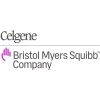
Vorinostat (MK-0683, SAHA [Suberoylanilide Hydroxamic Acid]) + Lenalidomide + Dexamethasone in Multiple...
Relapsed or Refractory Multiple MyelomaThe purpose of this Phase I study of vorinostat in combination with lenalidomide and dexamethasone in participants with relapsed or refractory multiple myeloma is to determine the maximum tolerated dose (MTD) as estimated by the incidence of dose-limiting toxicities (DLTs) and recommended Phase 2 dose (RP2D) as estimated by the incidence of drug-related adverse events (AEs).

Velcade®-Melphalan Association in Autologous Stem-Cell Transplantation (ASCT)
Multiple MyelomaIntensification with autologous stem cell (ASCT) is currently the most effective treatment for subjects under 65 and the essential goal is to achieve complete response (CR) or very good partial response (VGPR= greater than 90% reduction of monoclonal component). However, only 50% of patients achieve this CR/VGPR even with tandem ASCT early in the course of disease. Optimization of the conditioning regimen could improve this CR/VGPR rate. The combinaison of Velcade and HD Melphalan has never been evaluated. However, at conventional doses, Velcade potentiates the antimyeloma effect of Melphalan without inducing any common toxicity. This study will be conducted in patients under the age of 65 with de novo multiple myeloma or in first relapse, with Salmon and Durie stage of III, II, I with one symptomatic bone lesion (radiological)and no contraindication to intensification. The primary objective will be to increase the CR/VGPR rate 3 months after autologous peripheral blood stem cell transplantation conditioned by Velcade-Melphalan from 40% to 70%. With alpha=5% and bêta=10%, 61 patients will be included. Secondary objectives will be to assess the toxicity of the Velcade-Melphalan conditioning regimen, the progression-free survival and the overall survival after intensification. Response rates will be evaluated according to the response criteria defined by. Analysis will be performed on an intention-to-treat basis. After conventional induction therapy and PBSC collection, patients will be offered this new conditioning regimen. they will be free to refuse this regimen, in which case they will receive standard intensification therapy by Melphalan 200 mg/m² followed by autologous stem cell transplantation. Evaluation will occur at 3 months post intensification.

Busulfan, Cyclophosphamide, & Antithymocyte Globulin Followed by Stem Cell Transplant in Treating...
Graft Versus Host DiseaseLeukemia5 moreRATIONALE: Giving chemotherapy before a donor bone marrow transplant or peripheral stem cell transplant helps stop the growth of cancer cells and helps stop the patient's immune system from rejecting the donor's stem cells. When certain stem cells from a donor are infused into the patient they may help the patient's bone marrow make stem cells, red blood cells, white blood cells, and platelets. Sometimes the transplanted cells from a donor can make an immune response against the body's normal cells. Giving tacrolimus and mycophenolate mofetil after the transplant may stop this from happening. PURPOSE: This phase II trial is studying how well giving busulfan together with cyclophosphamide and antithymocyte globulin followed by donor stem cell transplant works in treating patients with hematologic cancer.

Everolimus in Treating Patients With Relapsed or Refractory Multiple Myeloma
Multiple Myeloma and Plasma Cell NeoplasmRATIONALE: Everolimus may stop the growth of cancer cells by blocking some of the enzymes needed for cell growth and by blocking blood flow to the cancer. PURPOSE: This phase II trial is studying how well everolimus works in treating patients with relapsed or refractory multiple myeloma.

Dose Escalation Trial of Dalotuzumab (MK-0646) in Advanced Solid Tumors and Multiple Myeloma (MK-0646-001)...
Solid TumorMultiple MyelomaThis study will look for the highest tolerated dose of dalotuzumab (MK-0646) given as weekly, every other week. or a every three week infusion. The hypothesis of this study is that administration of dalotuzumab as a one- to two-hour weekly, every other week, or every three week infusion in participants with advanced cancer will be generally safe and tolerated at a dose which achieves a trough concentration ≥3 μg/mL.

Cyclophosphamide, VELCADE, DOXIL, and Dexamethasone, (CVDD) in Newly Diagnosed Patients With Multiple...
Multiple MyelomaCyclophosphamide is a chemotherapy agent with known activity in myeloma. The new regimen that we will test in this study is called CVDD and contains Cyclophosphamide with Bortezomib (VELCADE), Pegylated Liposomal Doxorubicin (DOXIL®, PLD), and Dexamethasone (VDD). The purpose of this study is to determine if the addition of another type of chemotherapy agent, Cyclophosphamide, to the regimen VDD (CVDD) is well tolerated and improves response rates in myeloma. We will also find the highest safe dose of the study drugs taken together that a patient can tolerate, and how long it takes for multiple myeloma patients to respond after they have taken the study drugs and how long the response lasts.

Study Combining Bortezomib With High Dose Melphalan to Treat Multiple Myeloma
Multiple MyelomaThe purpose of this study is to determine the tolerance and potential efficacy of combining dose intense melphalan with escalating doses of bortezomib in patients with multiple myeloma undergoing autologous stem cell transplantation.

A Phase 1b/2, Dose-Escalation Study of Elotuzumab (Humanized Anti-CS1 Monoclonal IgG1 Antibody)...
Hematologic CancerThe purpose of this study is to evaluate the combination of elotuzumab, lenalidomide, and dexamethasone in subjects with relapsed multiple myeloma.

A Safety, Tolerability and Efficacy Study of ACE-011 in Patients With Osteolytic Lesions of Multiple...
Multiple MyelomaMulti-center, randomized, multiple-dose study to evaluate the safety, tolerability and efficacy of ACE-011 in patients with osteolytic lesions of multiple myeloma.

A Study to Assess BHQ880 in Combination With Zoledronic Acid in Relapsed or Refractory Myeloma Patients...
Multiple Myeloma Bone DiseaseThis study has two portions, a phase I portion and a phase II portion. The purpose of the phase I portion is to assess the maximum-tolerated dose (MTD) and to characterize dose limiting toxicity (DLT) of escalating doses of BHQ880 (up to a maximum dose of 20 mg/kg) in combination with standard chemotherapy and zoledronic acid in relapsed or refractory multiple myeloma patients. The phase II portion of the study will also be conducted in relapsed or refractory multiple myeloma patients. Patients will be treated with various doses of BHQ880 or placebo in combination standard chemotherapy. In the phase II portion of the study zoledronic acid will be added after the first 28 days of therapy with BHQ880 or placebo and standard chemotherapy. This will allow any BHQ880-related changes in bone biomarkers to be detected in a zoledronic acid-free environment. The purpose of the phase II portion of the study, is to determine one or more doses of BHQ880 for further development based on dose-efficacy modeling. Efficacy is defined as time to first skeletal-related event and change in bone markers for bone resorption and formation relative to placebo. A skeletal-related event is defined as: Pathologic fracture Spinal cord compression Requirement for either radiation or surgery to bone due to: Pain Prevention of imminent fracture Stabilization of a fracture Biomarker and imaging endpoints will be assessed in both phases of the study. The pharmacodynamic effects of BHQ880 will be assessed by measuring biochemical markers of bone formation, resorption, and metabolism in serum and urine. Charges in serum DKK1 levels will be characterized. The size and number of lytic bone lesions as measured by bone survey (X-ray) or MRI will be assessed. In addition, bone mineral density (BMD) will be measured by DEXA scan and at selected sites with QCT scans.
